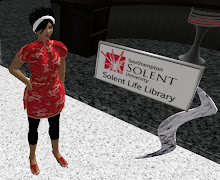(with more for those who can't resist a hyperlink...)
"Web 2.0 is an attitude not a technology. It’s about enabling and encouraging participation through open applications and services. By open I mean technically open... but also, more importantly, socially open, with rights granted to use the content in new and exciting contexts. Of course the web has always been about participation, and would be nothing without it. It’s single greatest achievement, the networked hyperlink, encouraged participation from the start. Somehow, through the late nineties, the web lost contact with its roots and selfish interests took hold. This is why I think the Web 2.0 label is cunning: semantically it links us back to that original web and the ideals it championed, but at the same time it implies regeneration with a new version. Technology has moved on and it’s important that the social face of the web keeps pace."This was originally posted by Ian Davis but I found it quoted on a Business Week blog by Rob Hof who says
"the term has helped define a new generation of technologies whose social nature differs qualitatively from the broadcast-oriented first generation of Web technologies."
Some key features of Web 2.0
- The web is used as the platform, rather than having software installed on a local pc or network
- It harnesses collective intelligence via interaction, rather than broadcasting information to a passive audience
- Data is key (e.g. Amazon, who added data to basic records to create a superior service)
- It requires no software upgrades or reinstallation, but changes through continuous development on a web platform
- It makes use of lightweight programming and easy to use systems (e.g. RSS, wikis, blogs)
- It has cross platform compatibility
- and provides a rich user experience
Ken Chad and Paul Miller from Talis have put this in a library context and comment that,
"Library 2.0 is a concept of a very different library service that operates according to the expectations of today’s library users. In this vision, the library makes information available wherever and whenever the user requires it."It looks like this is going to be major subject of debate in the library and information world.
As a personal view, it looks to me like there is great potential for libraries to work alongside the new breed of internet information sources, such as the ubiquitous Google, rather than trying to compete with them. Web 2.0 Library 2.0 indeed!


2 comments:
Alison,
O'Rielly is wrong: Amazon never licensed data from Bowker and therefore did not add data to create a superior service. They did in fact use Baker & Taylor's Titlesource.
Thanks. It just goes to show, you can't believe all that you read.
I haven't had time to check the facts yet, but I've removed the word Bowker from my blog entry, so as not to risk perpetuating an error.
Post a Comment